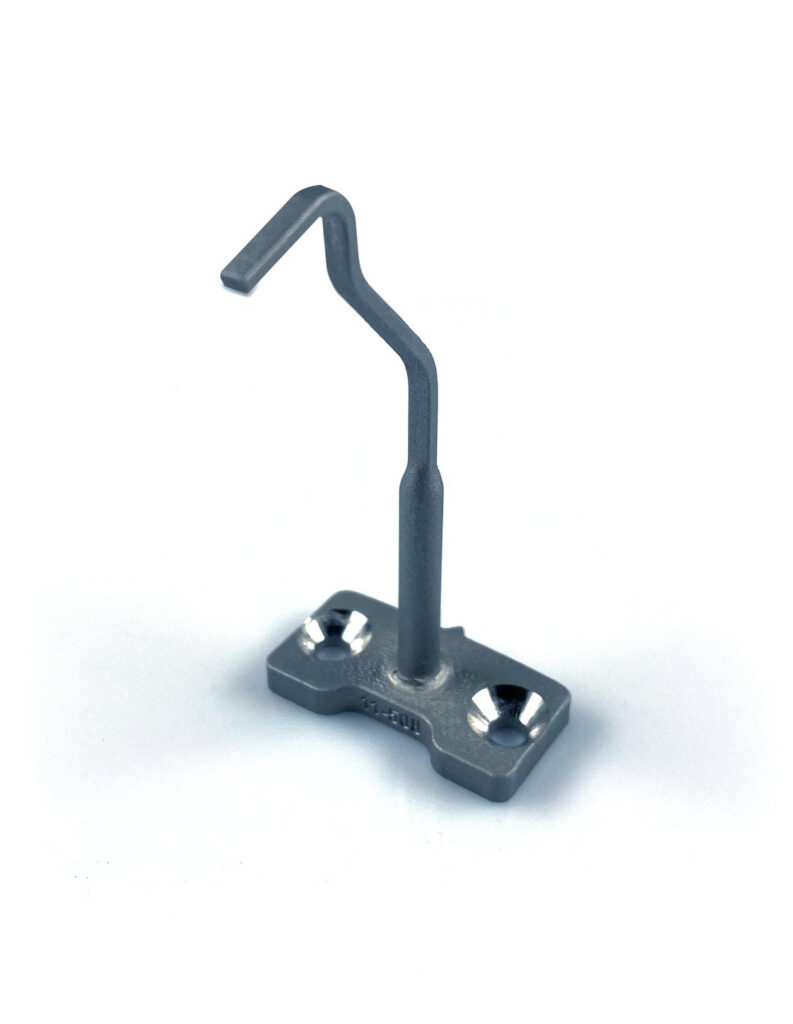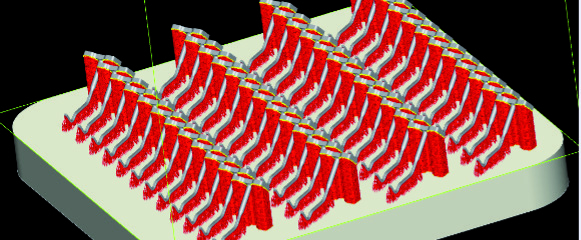Though the automotive industry was one of the earliest adopters of additive manufacturing (AM) for prototyping purposes, the cost of the technology has been too high to apply it to end part production at scale. That is beginning to change, however, and one of the leaders demonstrating the paradigm shift taking place is the Volkswagen Group (VW), which has been steadily increasing its metal 3D printing capacity. The latest move from VW is the acquisition of a second MetalFAB 3D printer from Dutch manufacturer Additive Industries.
VW Adds Second MetalFAB 3D Printer
Volkswagen began ramping up its use of metal AM in 2018, when it established a 3D printing center dedicated to the technology. There, the automotive giant installed a MetalFAB laser powder bed fusion (LPBF) machine, which it chose for its high level of automation, thus reducing manual intervention and improving safety. Moreover, the 3D printer is modular in design, allowing VW to expand production capacity without necessarily investing in entirely new machines.

This 3D printed tooling nozzle is used for the production of the VW Tiguan, with over 1,000 made per year for the manufacturing of the vehicle. Previously, the element was made up of two machined and welded parts. With the MetalFAB system, there is no post-processing required, resulting in 650 percent cost reduction.
Additive Industries highlights the enhanced throughput possible with its systems, including full-field lasers and automated build changeovers. VW has additionally engaged in parameter development with the company, as well as invested in its Powder Load Tool and Powder Recovery Station.

The nozzles produced as a batch within the MetalFAB machine.
“We as Additive Industries are pleased to be able to provide Volkswagen Group with their second MetalFAB system. We are here to help them expand their capabilities in the field of additive manufacturing and move towards the next step in the automotive industry,” said Mark Massey, Chief Executive Officer at Additive Industries.
3D Printing in Automotive
A number of developments have seen the automotive sector embrace 3D printing for end parts at an increasing rate. Among those is the evolution of processes for larger batch production, as well as further automation. The former chiefly relates to larger metal 3D printers and the growth in metal binder jetting. LPBF systems are expanding in terms of build volume and laser capacity, allowing for higher throughput, thus allowing these printers to pay for themselves more quickly. Meanwhile, metal binder jetting is being pitched as a cost-competitive process for 3D printing larger numbers of parts.
As far as automation is concerned, 3D printer manufacturers and users are attempting to reduce the total amount of human intervention required to run machines. BMW, for instance, was involved in a key project dedicated to automating the pre- and post-process steps in LPBF. Since then, BMW has begun a similar process with sand casting cores.
Founded in 2012, Additive Industries was among the first 3D printer manufacturers to focus on automation, when it unveiled the first iteration of its MetalFab system. While other firms began to toy with the idea, Additive Industries essentially pushed the LPBF sector as a whole to explore automation in earnest.
With this in mind, the MetalFAB is an apt choice for VW, which is Europe’s largest carmaker and operates 12 brands, including Audi, Porsche, Ducati, Bentley, and Lamborghini. Through all of these brands, VW company is a major user of AM and has set high goals for the use of the technology in end part production. With HP’s metal binder jet technology, for instance, it aims to 3D print 100,000 components annually.
Additive Industries’ Trajectory
Despite its high-end systems and high-profile clients, Additive Industries struggled a bit as the industry and economy as a whole slumped. In turn, the Wintermans family, the firm’s leading investor that helped co-found Additive Industries, dedicated further funds to the business, as its former CEO transitioned out in 2020 before yet another CEO left in 2022. Massey, the current leader of the company previously served as chief commercial officer.
Additive Industries’ overall strategy, to increase throughput and quality control in order to reduce total cost of ownership over time, is a solid one. Moreover, it has the support of a loyal investor in the Wintermans family, who should continue to back the firm as it progresses. Even in the tumult of executive changes, is has been able to find new and maintain old customers, including ABB, Safran, and VW.
Repeat business from powerful clientele would suggest that the company and its technology remain firm and, as Europe reaches for further decarbonization and supply chain resilience, the Dutch 3D printer manufacturer could find itself growing quite quickly.
Subscribe to Our Email Newsletter
Stay up-to-date on all the latest news from the 3D printing industry and receive information and offers from third party vendors.
You May Also Like
New Report: Semiconductor Industry to See $1.4B in 3D Printing Revenues by 2032
“The semiconductor sector has become the most strategically significant area of global industry.” Truer words are hard to come by when it comes to the modern world, and they are...
Will Photonic-Crystal Lasers Revolutionize 3D Printing?
Powder bed fusion (PBF) for metals and polymers predominantly utilizes lasers as the primary heat source. Some directed energy deposition (DED) technologies also employ lasers, while various vat polymerization methods...
3D Printing Unpeeled: Orbex Investment, IndoMIM and HP, Ultrasonic Waves
INDO-MIM has bought three HP Metal Jet S100 printers, operating two in India and one in Texas. This is a win for HP because the company has deep experience in...
3D Printing Webinar and Event Roundup: April 21, 2024
It’s another busy week of webinars and events, starting with Hannover Messe in Germany and continuing with Metalcasting Congress, Chinaplas, TechBlick’s Innovation Festival, and more. Stratasys continues its advanced training...































